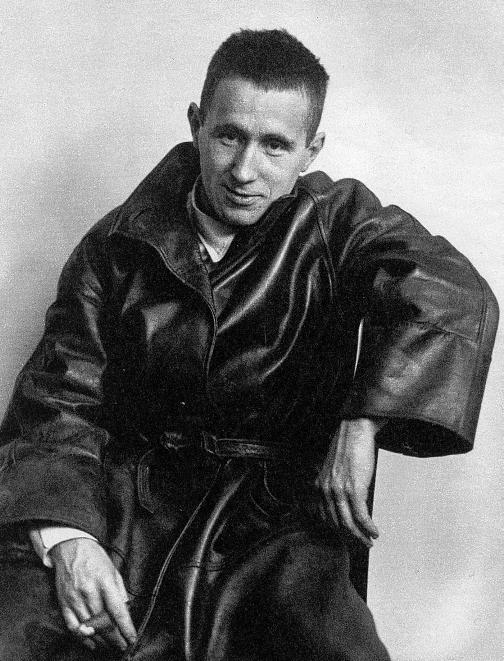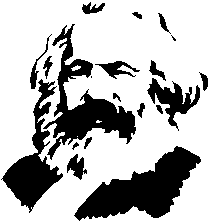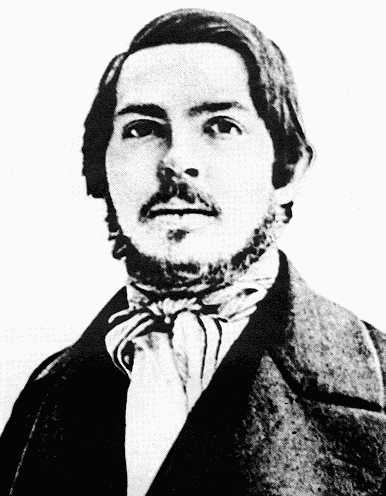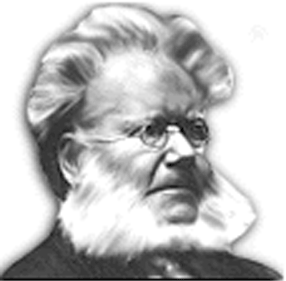Unit III: Modern Drama (Ibsen, Brecht, and Churchill)
Anti-Aristotelian Theater
1. Not unified time
2. Character/plot not unified
3. Not “great characters”
Henrik Ibsen (1828-1906)
1828: Born in Skien to a merchant father
1836: Father declares bankruptcy, family leaves mansion
1846: Supports his illegitimate child (mother, servant girl of employer)
1850-64: Works for Mollergate Theater in Christiania (Oslo)
1867: Peer Gynt
1879: A Doll's House (ET DUKKEHJEM)
1881: Ghosts; Autobiography (unfinished)
1887: Rosmersholm
1890: Hedda Gabler
1891: Returns to Norway
1900: Suffers a series of strokes that leave him unable to write
1906: Dies
A Doll's House in Context
1792
|
Mary Wollstonecraft's A
Vindication of the Rights of Women in England
|
1848
|
Revolutions in Europe
|
1859
|
Darwin's Origin of Species
|
1867
|
Louisa May Alcott's novel, Little
Women
|
1869
|
Susan B. Anthony begins suffrage movement; John Stuart Mill's
essay "The Subjection of Women" (UK) influences Norwegian feminist
movement
|
1879
|
Ibsen's A Doll's House (ET DUKKEHJEM)
|
1888
|
First beauty contest in Spa, Belgium
|
1889
|
Gerhart Hauptmann produces first play, Before Sunrise, at German Free
Theater in Berlin
|
1891
|
Independent Theater produces Ibsen's plays in London
|
1913
|
Shaw writes The
Quintessence of Ibsenism
|
1920
|
Women permitted to vote in USA
|
A propaganda play?
1) "Whatever I have written has been without any conscious thought of
making propaganda .... I am not even quite clear as to just what this
women's rights movement really is."
Ibsen to the Norwegian League for Women's Rights in Christiania, 26
May 1898, in Ibsen: Letters and Speeches, ed. Evert Sprinchorn
(New York, 1964), 337.
2) Speech to working men of Trondheim in 1885: “The transformation
of social conditions which is now being undertaken in the rest of
Europe is very largely concerned with the future status of the workers
and of women. That is what I am hoping and waiting for, that is what I
shall work for, all I can.”
3) In his notes to A Doll’s House: “A woman cannot be
herself in contemporary society, it is an exclusively male society with
laws drafted by men, and with counsel and judges who judge feminine
conduct from the male point of view.”
Some feminist connections:
- the Norwegian feminist Camilla Collett
- Mother-in-law, the Danish writer Magdalene Thoresen, was a "New
Woman"
- In 1879 tried to open post of secretary and secure voting rights
in the Scandinavian Club in Rome to women
Discussion L. 17
1. What’s the significance of the first line?
2. What’s the central conflict in the play?
3. What is the significance of the drawing room SETTING?
4. What’s the significance of Nora’s many names?
5. What kind of marriage do they have?
6. What do you make of the subject of inheritance?
7. FROM what we know about them, how would you characterize each
figure? What motivates each character?
Discussion L. 18: Interpretive Questions
General question for every group to consider: Is this a
“feminist”
play? By feminism, we refer here to the 19th-century “woman
question,”
which asks whether women engaged in public life (work, business,
politics, etc.) can still retain their femininity.
I. FAMILY: How many different familial tragedies occur in Ibsen’s
drama? What is ‘family tragedy’ according to Ibsen? What does the play
say about fatherhood, motherhood, and parenting? (cf. 426, l. 305; 430,
l. 670; 431, l. 865; 432, l. 910; 433-34, l. 30-40; 433, l. 1025-1040;
434, l. 90; 435, l. 225-30; 444, l. 450; 445, l. 590-605)
II. SETTING: What problems happen in the outside world the audience
cannot see but hears about? How does this reflect on the meaning of the
drama’s title? (428, l. 530; 432, l. 965; 433, l. 1045; see also
references for FAMILY above)
III. PERFORMANCE: How do you see Nora “performing” throughout the play?
In other words, is she just pretending to be naïve in the first
act, or does she actually evolve/change by the end? Does that change
your (feminist) evaluation of the play? (cf. 433, l. 995; 435, l. 195;
439, l. 730; 440, l. 750-70; 442, l. 180-85; 443, l. 265; 444, l. 400;
444, l. 440, 481; 445, l. 522)
IV. CLASS: What does work mean to each character? How does it inform
each character’s identity? (426, l.265; 427, l. 320; 428, l. 475; 430,
l. 745; 435, l. 245, 255-60; 438, l. 605-15; 441, l. 75-80)
Bertolt Brecht, Mother Courage and Her
Children
Biography

- 1898: Born Eugen Bertold Friedrich Brecht in Augsburg, Germany
- 1914: Constructs a puppet theater with friends, even charging
admission
- 1917-21: Studies Medicine
- 1918: Works in army hospital
- 1923: Baal
- 1924-33: Works with directors Max Reinhardt and Ewin Piscator in
Berlin; develops theory of epic theater; becomes a Marxist
- 1928: Threepenny Opera with Kurt Weill
- 1933-41: Exile in Scandinavia
- 1941-47: Exile in California; tried for Un-American activities
and moves to Communist East Germany
- 1941: Mother Courage and Her Children
- 1943: The Life of Galileo; The Good Woman of Szechwan
- 1948: The Caucasian Chalk Circle; Antigone
- 1956: Dies of a heart attack in East Berlin
Marx, Marxism, and Communism

Karl Marx, Friedrich Engels, and The
Communist
Manifesto
Who
|
Marx was the son a converted
Protestant
Jewish lawyer and wrote radical journals, which exiled him from Germany
and
France and led him to England; Engels was the son of a wealthy
industrialist
and went to England to run his father's cotton mill in Manchester,
England. |
What
|
Friedrich Engels (above) wrote the
actual
words of the Manifesto, but they are based on Marx's
ideas.
|
Where
|
Both born in present-day Germany
(Trier
and Barmen) and ended their lives in London, England.
|
When
|
1818-83 (Marx) and 1820-95 (Engels); Manifesto
written (at the instructions of the International Communist League) in
1848,
rpt. German 1872, Russian trans. in 1882, Enl. trans. in 1888
|
Why
|
The 1848
revolutions
across Europe and the extremely horrible working conditions of the
19th century
form the historical context for the Manifesto, which was
written just
as socialist thought and workers' unions were uniting in protest.
The rebellions in 1848 were failed revolutions in the sense
that
they did not elicit lasting political change. As with most historical
movements,
the effects of this publication were long ranging. The Communist
Manifesto
has had a profound effect on
world history.
|
Graphs and Outlines
Oppositions (Class Struggles):
·
freeman/slave
·
patrician/plebeian
·
lord/serf
·
oppressor/oppressed
·
bourgeoisie/proletariat
What are more modern terms
for these binaries?
|
"Evolutionary Progress" According to Marx:
Aristocracy / Feudalism
Bourgeoisie / Capitalism
Citizens / Socialism
Proletariat / Communism
Dialectical refers to Hegel and Feuerbach's concept of
historical
progress. Both use the following model:
Thesis
Antithesis
Synthesis
Dialectical thought assumes that everything in nature has its opposite
(i.e.,
life/death). A dialectical view of history interprets the clash of
antithetical
historical forces (i.e., the proletariat versus the bourgeoisie) as
anterior
to achieving social progress. The word materialism
distinguishes dialectical
thought from Hegelian idealism. In idealist thought, ideas generated by
consciousness
(beauty, the spirit, faith, etc.) are the basis for knowledge.
Materialist
thinkers, on the other hand, prioritize economic forces (ownership of
the
means of production) and social relations (inextricable power dynamics
like
gender).
So, dialectical materialism refers to a peculiarly Communist view of
history,
that (ironically) follows the Judeo-Christian narrative, whereby
progress
is achieved after antithetical events happen (Paradise--man on
earth--Apocalypse).
In dialectical materialism, the
mind/consciousness
is an epiphenomenon (copy, reflection, photograph) of matter.
Commodification refers to the process of turning the means of
production
(labor and laborers) into commodities.
Other key terms:
"World market" and the means of production:
"Meantime, the markets kept ever growing, the demand ever
rising.
Even manufacturers no longer sufficed. Thereupon, steam and machinery
revolutionized
industrial production. The place of manufacture was taken by the giant,
Modern
Industry; the place of the industrial middle class by industrial
millionaires,
the leaders of the whole industrial armies, the modern bourgeois.
Modern industry has established the world market, for
which
the discovery of America paved the way. This market has given an
immense
development to commerce, to navigation, to communication by land. This
development
has, in turn, reacted on the extension of industry; and in proportion
as
industry, commerce, navigation, railways extended, in the same
proportion
the bourgeoisie developed, increased its capital, and pushed into the
background
every class handed down from the Middle Ages."
Modern terms and Marxist roots
"The bourgeoisie, wherever it has got the upper hand, has
put
an end to all feudal, patriarchal, idyllic relations. It has
pitilessly
torn asunder the motley feudal ties that bound man to his 'natural
superiors,'
and has left no other nexus between man and man than naked
self-interest,
than callous 'cash payment.' It has drowned out the most heavenly
ecstasies
of religious fervour, of chivalrous enthusiasm, of philistine
sentimentalism,
in the icy water of egotistical calculation. It has resolved personal
worth
into exchange value, and in place of the numberless indefeasible
chartered
freedoms, has set up that single, unconscionable freedom — Free Trade.
In
one word, for exploitation, veiled by religious and political
illusions, it
has substituted naked, shameless, direct, brutal exploitation"
(20,
my emphasis).
"The bourgeoisie, by the rapid improvement of all
instruments
of production, by the immensely facilitated means of communication,
draws
all, even the most barbarian, nations into civilization. The cheap
prices
of commodities are the heavy artillery with which it forces the
barbarians'
intensely obstinate hatred of foreigners to capitulate. It compels all
nations,
on pain of extinction, to adopt the bourgeois mode of production;
it compels them to introduce what it calls civilization into their
midst,
i.e., to become bourgeois themselves. In one word, it creates a world
after
its own image" (22, my emphasis).
The Bourgeois Empire
"Society suddenly finds itself put back into a state of
momentary
barbarism; it appears as if a famine, a universal war of devastation,
had
cut off the supply of every means of subsistence; industry and commerce
seem
to be destroyed. And why? Because there is too much civilization,
too
much means of subsistence, too much industry, too much commerce.
The
productive forces at the disposal of society no longer tend to further
the
development of the conditions of bourgeois property; on the contrary,
they
have become too powerful for these conditions, by which they are
fettered,
and so soon as they overcome these fetters, they bring disorder into
the
whole of bourgeois society, endanger the existence of bourgeois
property.
The conditions of bourgeois society are too narrow to comprise the
wealth
created by them. And how does the bourgeoisie get over these crises? On
the
one hand, by enforced destruction of a mass of productive forces; on
the
other, by the conquest of new markets, and by the more thorough
exploitation
of the old ones. That is to say, by paving the way for more extensive
and
more destructive crises, and by diminishing the means whereby crises
are
prevented" (24, my emphasis).
"Owing to the extensive use of machinery, and to the
division
of labor, the work of the proletarians has lost all individual
character,
and, consequently, all charm for the workman. He becomes an
appendage
of the machine, and it is only the most simple, most monotonous,
and
most easily acquired knack, that is required of him. Hence, the cost of
production
of a workman is restricted, almost entirely, to the means of
subsistence that
he requires for maintenance, and for the propagation of his race. But
the
price of a commodity, and therefore also of labor, is equal to its cost
of
production. In proportion, therefore, as the repulsiveness of the work
increases,
the wage decreases. What is more, in proportion as the use of machinery
and
division of labor increases, in the same proportion the burden of toil
also
increases, whether by prolongation of the working hours, by the
increase
of the work exacted in a given time, or by increased speed of
machinery,
etc." (26).
Originally, all Communists were "social democrats." After
Bolshevik
revolutionaries took over Russia in 1917, they started calling
themselves
simply "Communists." "Social democrats" came to signify a more moderate
(perhaps
mainstream, but according to Marxists diluted) wing of Communist
thought.
In the 1930s, FDR employed many social democratic reforms to revitalize
the
economy. The New
Deal
included large government-funded work schemes like the WPA, the
construction
of infrastructure (Hoover Dam), and renovation of public lands (trails
in
National Forests).
Most governments in Western Europe are based on social democracy and
have
major social democratic parties in power (German Social Democrats,
British
Labour Party). Other European countries--Denmark, Sweden, Norway,
France,
Italy, etc.--can be seen as socially democratic in that industry is
forced
into supporting a broad-based social welfare system (healthcare,
education,
etc.). Social democracy must be distinguished from a more pure forms of
Communism,
which ought to follow the "10 point plan:"
"1. Abolition of property in land and
application
of all rents of land to public purposes.
2. A heavy progressive or graduated income tax.
3. Abolition of all rights of inheritance.
4. Confiscation of the property of all emigrants and rebels.
5. Centralization of credit in the banks of the state, by means of a
national
bank with state capital and an exclusive monopoly.
6. Centralization of the means of communication and transport in the
hands
of the state.
7. Extension of factories and instruments of production owned by the
state;
the bringing into cultivation of waste lands, and the improvement of
the soil
generally in accordance with a common plan.
8. Equal obligation of all to work. Establishment of industrial armies,
especially
for agriculture.
9. Combination of agriculture with manufacturing industries; gradual
abolition
of all the distinction between town and country by a more equable
distribution
of the populace over the country.
10. Free education for all children in public schools. Abolition of
children's
factory labor in its present form. Combination of education with
industrial
production, etc." (42-3).
"Bourgeois marriage is, in reality, a system of wives in
common
and thus, at the most, what the Communists might possibly be reproached
with
is that they desire to introduce, in substitution for a hypocritically
concealed,
an openly legalized system of free love. For the rest, it is
self-evident
that the abolition of the present system of production must bring with
it
the abolition of free love springing from that system, i.e., of
prostitution
both public and private" (39).
Marxists'
Internet Archive

Discussion L. 20--Group Discussion Questions
1. What is Kattrin’s role in the play? (510, l. 285; 517, l. 39-95;
521, l. 30-40; 523, l. 115-25; 524, l. 230-70; 528, l. 70-75; 531)
2. What is Brecht’s critique of religion? (514, l. 140; 516, l.
300, 340; 526, l. 170)
3. If war is so horrible, why does it persist? What answer does
Brecht’s play give to this eternal question? (522, l. 45-50; 521, l.
15-40; 523, l. 120-25; 524, l. 230; 526, l. 135-40; 527, l. 345-50;
530, l. 25-40)
L. 26: Peer
Review and Discussion
The GOAL of today’s class is for
you to leave with a clear sense of your paper’s argument and a better
sense of the work you are writing about.
‡ Divide into groups according to which author(s) you’re writing
about.
Preliminary:
Write an abstract or précis of your paper; this
should include your argument/thesis/controlling idea and hint at the
general structure and types of supporting evidence you’ll be using.
Submit this to the instructor.
A. Discuss the general question addressed to your group. These
questions are designed to hopefully give you another perspective on
your topic.
1. Ibsen's A Doll House
Discuss
Helmer, Nora, Krogstadt, and Mrs. Linde's understanding of morality.
Who believes in morality at all costs, and who weighs the
circumstances? Explore aspects of heredity and environment that inform
moral viewpoints for each individual.
Have two volunteers read aloud the dialogue between
Nora and Helmer
in act I up to the entrance of the maid. Have two different volunteers
read the dialogue between Nora and Helmer in act III beginning with
Helmer's line "Nora-what is this? That hard expression-" through the
end of the scene. Compare and contrast the relationship as revealed in
each scene. Discuss the ways in which Ibsen asks us to recall the first
scene in the last.
2. Brecht's Mother Courage and
Her Children
a) Discuss Brecht's theories of epic theater and alienation effect.
What narrative and theatrical devices does Brecht employ in Mother
Courage that illustrate his theories of drama?
b) The play was first seen by audiences in Zurich in 1941. What
elements of the play suggest an antiwar theme?
3. Churchill’s Cloud Nine
a) What argument do you think Churchill is trying to make about
identity
and socio-historical materialism? In other words, can individuals have
identities completely apart from the economic, historical, and social
forces that try to shape them? Or are people always going to be a
product of their environment? Does the play suggest that there is a way
to escape either of these dilemmas? Do you agree or disagree with
Churchill’s
argument?
b) Imagine you are the casting director for a new production of the
play. Who would you cast? And why? There are few limitations here: you
may cast from film, television, music, and theater. All casting
decisions, however, must be well supported in your casting notes.
B. Present your argument for your
paper to another classmate. Your
classmate should then suggest a counterargument or
antithesis to your
paper’s controlling idea. With this feedback, construct a new argument.





